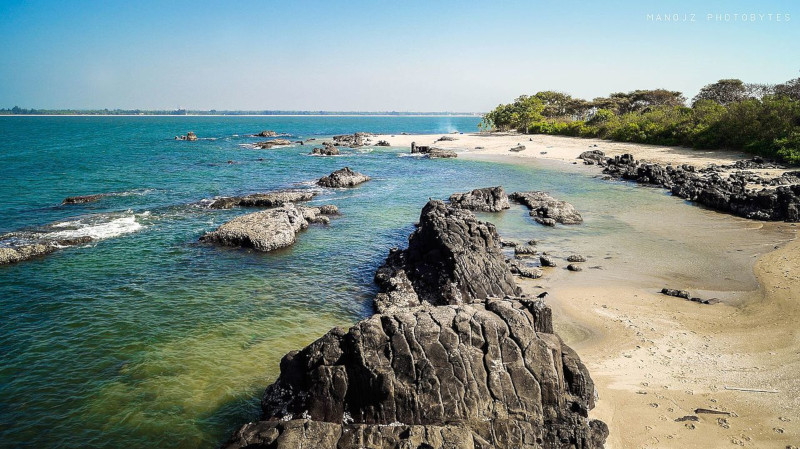
Saint Mary’s Islands Facts
- The term Saint Mary’s Islands represents one of the common names for a quite lovely grouping of four small islands. Somewhat surprisingly, this set of islets also goes by two other common names. Those remain Coconut island and Thonsepar.
- Which name one chooses to use makes no difference to the astounding visual appeal of the location. That holds true partly because the wonder of Nature possesses great natural beauty. But it also boasts some remarkable geological formations.
- This stunning location also has its place in history. The first recorded mention of these four beautiful islands occurred in the year 1498. At that time, the noted Portuguese explorer Vasco de Gama landed there, on his journey from Portugal.
- Consequently, the gorgeous Saint Mary’s Islands derives its name from this event. Upon landing, the explorer named one of the islands O Padrão de Santa Maria. Over time, this became modified, as well as applied to the entire grouping collectively.
- In modern times, the location now lists as a National Geological Monument in the country it formed in. This action took place in 2016. Along with the other monuments, it represents an important site for what’s now known as geotourism.
Related Articles
Saint Mary’s Islands Physical Description
Despite their great beauty, the marvelous Saint Mary’s Islands remain relatively small. In point of fact, largest of these continues to be the most notable of the group. It has a roughly rectangular shape, measuring roughly 1,640 ft (500 m) long and 328 ft (100 m) wide.
Each of the other members of the fantastic grouping measures significantly less in area. Like the largest one, known as Coconut Island, these align themselves approximately with the coastline. Each also has multiple types of remarkable geology to offer the visitor.
Firstly, all of the members of Saint Mary’s Islands possess beautiful, naturally occurring terraces. Secondly, each of them further holds numerous small but lovely beaches. Uniquely, though, the majority of these have a decidedly uplifted nature to them, adding to their allure.
However, the most remarkable feature belongs solely to Coconut Island. That’s due to the fact that this particular one boasts some impressive geological formations. These consist of astounding basaltic formations, having an incredible hexagonal structure.
Saint Mary’s Islands Location, Geology, and Ecology
The marvel of Nature now collectively know as Saint Mary’s Islands formed in a moderately remote and isolated region of the world. It’s also a portion of the globe often known for its great natural beauty, and sometimes, to some people, even its distinctive air of mystery.
This stunning discontinuous small island chain formed in the area of the world now called the Arabian Sea. More specifically, the grouping of islets lies off the coast of the country of India, in Asia. There, it lies near the port of Malpe, located in the state of Karnataka.
Geological evidence indicates that the site formed around 60 million years ago. This activity took place during the Cretaceous-Eocene period. It further happened as a direct result of massive outpourings of lava. This specific lava also had a comparatively high ratio of basalt.
Some portions of this cooled in a manner sufficient to create the distinctive hexagonal structures for which its known. Others, however, led to the creation of step-like terraces. This tendency can be seen in the extremely flat, low-slung nature of the islands.
The flora of the islands remains more abundant than the fauna, though both appear to be sufficient. The plant life mainly consists of several varieties of trees, with coconut trees being the most numerous. Others, such as vines and shrubs also appear, however.
Meanwhile, though less prevalent, several varieties of animals do make their home on Saint Mary’s Islands. The vast majority of these, though, consist of different types of birds. Among these, creatures such as kites, various egrets, and the occasional crow are the most common.
Features Sharing Its Region
Check out our other articles on 5 Intriguing African Insects, Vietnamese Mossy Frog, Madeira, Chilean Dolphin, Western Juneberry, Plumed Basilisk, Grizzled Mantis, Crabeater Seal
